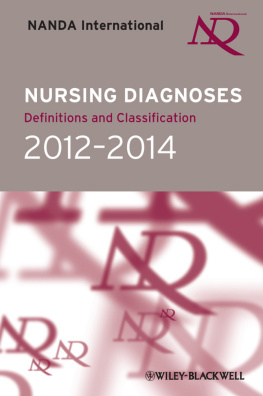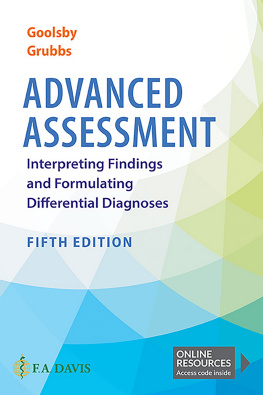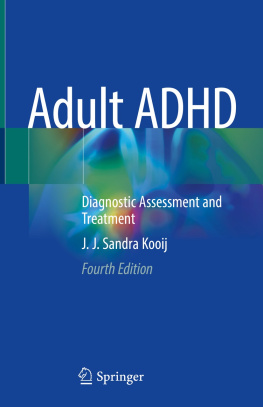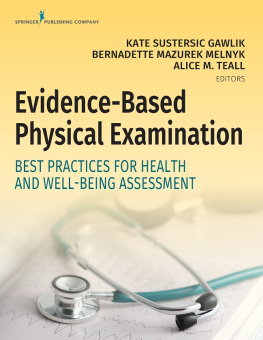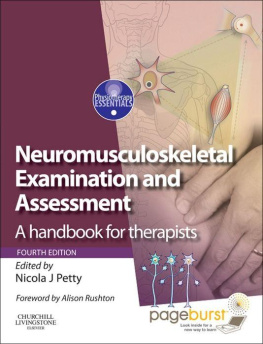A genogram with five hexagons and two triangles. The position of the hexagons: Two placed alternately at the bottom level representing 45-year-old male patient who has HTN and diabetes mellitus (DM) and his 40-year-old brother having DM; One hexagon placed at mid-level representing the patient's 68-year-old father who has HTN and DM; two placed alternately at the top level representing the patient's 62-year-old divorced paternal grandfather who died of a myocardial infarction (MI) and 46-year-old maternal grandfather who died in a motor vehicle accident (MVA). The position of the triangles: Two placed on either sides of the second hexagon at the bottom level representing the patient's 42-year-old sister who is alive and well (A&W) and 38-year-old sister having DM; Two placed adjacent to each other at the mid-level next to the hexagon on the right hand side representing patient's mother who is 66 years old and has had breast cancer (CA) and his aunt who is 67 years and is alive and well (A&W); Two placed on either sides of the fifth hexagon at the top level on the right hand side representing patient's paternal grandmother who is 80-year-old and is A&W and his maternal grandmother who died of a stroke at age 78.
The figure demonstrates documentation of a sample case. Details captured in rows include: Row 1: Name JS, Date 1/19/13, Time 0845, DOB 1/16/48, Sex M Row 2: HISTORY Row 3: CC I have chest pain. Row 4: HPI 57-year-old Caucasian male in acute distress presents with a 2-hour history of chest pain. Mr. S woke up and felt a new heaviness in his chest. He took two Tums, which did not relieve the pain. Pain has gotten worse and is radiating down his left arm. He rates the pain an 8 (out of 10). He states he feels nauseated and slightly short of breath. Row 5: Medications Vasodec: 10 mg qd for HTN. Last dose 1/18/13. ASA: 81 mg qd for blood thinner. Last dose 1/18/13. Row 6: Allergies NKA Row 7: PMI Illnesses No history of angina or MI. History of hypertension for 5 years. History of GERD, self-treats with Tums Row 8: Hospitalizations/Surgeries No history of hospitalizations or surgeries. Row 9: FH Father died of MI at age 52. No history of cancer or diabetes mellitus. Row 10: SH Mr. S is married (for 25 years) and has two grown children living in the area. Mr. S is self-employed as a consultant and has insurance. He exercises 12 times per month. Mr. S tried to follow a low-fat diet. He smokes 2 packs per day (for 25 years). Row 11: ROS Row 12: General No history of recent weight change or dietary changes. Cardiovascular History of HTN. Chest pain, radiating to left arm (see HPI). Row 13: Skin Denies history of scars, eczema, psoriasis, or cancer. Respiratory Smokes 2 ppd ( 25 years); slight SOB. Row 14: Eyes Nearsighted and wears glasses. No history of glaucoma., Gastrointestinal Nausea started with chest pain. History of GERD, well controlled with PPI. Row 15: Genitourinary/Gynecological Difficulty starting stream for past. Has noctura >>2 nightly. 6 months ago, diagnosed with benign prostrate hypertrophy. Row 16: Nose/Mouth/Throat Denies oral problems; wears dentures, upper and lower. Row 17: Musculoskeletal Denies history of fractures, arthritis, or trauma." Row 18: Breast Denies problems., Neurological Denies history of seizures, strokes, or syncope. No history of Parkinson's, tremors, paralysis, headaches, falls, or vertigo. Denies depression, memory impairment, dementia, or speech impairment. Row 19: PHYSICAL EXAMINATION Row 20: Weight 195 lb, Temp 98.0 and BP 92/78 Row 21: Height 6', Pulse 118, and Resp 24 and labored Row 22: Skin Cool and pale; turgor, brisk recoil. Row 23: HEENT Eyes: No erythema of the sclera; pink conjunctiva, no discharge; EOMs intact w/o lid lag or nystagmus; fundoscopic exam revealed no AV nicking or cotton wool patches. Ears: Tympanic membrane pearly gray with no discharge. Mouth: Buccal mucosa pink, without lesions. Row 24: Cardiovascular S1 and S2 heard with no splitting or murmurs. S3 is audible predominantly at apex. PMI 5th ICS midclavicular line. No JV noted. Carotids equal bilaterally with no bruits over aorta renal, iliac, or femoral arteries. Capillary refill brisk. Pretibial edema+ bilaterally. Row 25: Respiratory Respirations labored. Clear to auscultation in all lobes. Row 26: Gastrointestinal Bowel sounds active in all quadrants. Abdomen soft and without tenderness. No hepatomegaly or splenomegaly noted. Row 27: Genitourinary Not examined. Row 28: Musculoskeletal Muscle strength 5/5 in upper and lower extremities bilaterally. Full ROM in all joints. No atrophy noted. No crepitus over joints noted. Gait deferred. Row 29: Neurological Awake, alert, and orient 3. Moderately anxious. PERRLA. Speech clear. CN IIXII intact. All DTRs bilaterally 2+. Row 30: Other Row 31: Lab Tests Tropin I, CK-MB, basic metabolic panel, PT, PTT drawn but not back from lab. Row 32: Special Tests 12 lead ECG indicates ST segment elevation in leads II, III, and AVF. No Q wave present; good progression of R wave leads V1V3. Chest x-ray clear. Row 33: Final Assessment Findings 1. Acute coronary syndrome 2. HTN 3. Cigarrette abuse
Vector illustration of male highlighting the Gastrointestinal tract. Parts labeled include: Oral cavity, Pharynx, Tongue, Esophagus, Liver, Large intestine, and Small intestine. Enlarged picture of the stomach is shown on the right side in a circle. Parts labeled include: Duodenum of small intestine, Pyloric sphincter, Stomach, and Gastroesophageal sphincter. Further, Gallbladder, Duodenum of small intestine, and Pancreas are shown in an enlarged form in a circle on the right side. Enlarged picture of the large intestine is shown below it. Parts labeled include: Transverse colon, Ascending colon, Descending colon, Ileum of small intestine, Appendix, Sigmoid colon, Rectum, and Anus. Enlarged image of the Ascending portion of large intestine is shown on the left. Other parts labeled include: Ileum of small intestine, Cecum, and Appendix. Enlarged image of the oral cavity is also shown on the left side. Labeled parts include: Sublingual gland, Submandibular gland, Submandibular duct, Masseter muscle, Parotid gland, and Parotid duct.
Details of each stage is as given below: Stage 1: Preadolescent Nipple elevation begins. Stage 2: Breast budding. Stage 3: The breast and areola enlarge without distinct evidence of separation between them. Stage 4: A secondary mound forms beyond the original breast mound as the areola and nipple project. Stage 5: The nipple projects and the areola becomes pat of the breast contour.
A) Parts labeled include: Scapula, Sternum, Manubrium, Sternoclavicular joint, Clavicle, Acromioclavicular (A/C) joint, Acromion process, Humerus, and Glenohumeral (shoulder) joint. B) Parts labeled include: Lateral border, Humerus, Glenoid fossa, Acromion process, Coracoid process, Clavicle, Superior angle, Supraspinous fossa, Medial border, Infraspinous fossa, and Inferior angle. C) Biceps (long head), Capsule, Coracohumeral ligament, Coracoacromial ligament, Acromioclavicular ligament, Coracoclavicular ligament comprising Trapezoid ligament and Conoid ligament, and Supraspinatus muscle.
A) Parts labeled include: Tibia, Fibula, Patellar ligament, Patellar retinaculum, Patella in quadriceps tendon, Medial collateral ligament, Tendon of biceps femoris muscle, Quadriceps femoris tendon, Quadriceps femoris muscle, and Femur. B) Parts labeled include: Tibia, Fibula, Tendon of semimembranosus muscle, Arcuate popliteal ligament, Tendon of biceps femoris muscle, Lateral collateral ligament, Oblique popliteal ligament, Medial collateral ligament, Lateral head of gastrocnemius muscle, Medial head of gastrocnemius muscle, Quadriceps femoris, and Femur.
Table title reads as ""Common Mental Health Disorders and Associated Findings"". The table comprises seven column and six rows. Details of rows read as: Row 1 (Header Row) : Diagnosis; Affect/ Emotion; Thought; Perception/View; Judgment; Motor Behavior; Speech Row 2: Depression; Sad; Negative, slow; Low self-esteem; Indecisive; Slow, retarded; Soft Row 3: Mania; Elated, angry outbursts; Racing; Grandiose; Impulsive; Hyperactive; Pressured Row 4: Schizophrenia; Flat, inappropriate; Delusions, paranoia; Auditory hallucinations; Indecisive; Rigid, withdrawn; Disorganized Row 5: Anxiety; Anxious, fearful; Obsessive, hard to concentrate; Worry, fear; Indecisive; Pacing, tense; Fast Row 6: Delirium and dementia (short- term memory); Labile; Confabulation, delusions; Visual or tactile hallucinations; Impulsive, difficult because of cognitive loss; Wandering, pacing; Varies"
Next page

